Nestled in the heart of downtown, the Juneau Hotel provides the perfect starting point to explore Alaska’s past.
Whether you’re interested in gold-mining or the former Russian territory’s march to statehood, don’t skip these seven must-see sites near Juneau Hotel.
You can explore downtown Juneau named to the National Register of Historic Places in 1994, on your own at your own pace. Just pick up a map at one of Juneau’s welcome centers or download it.
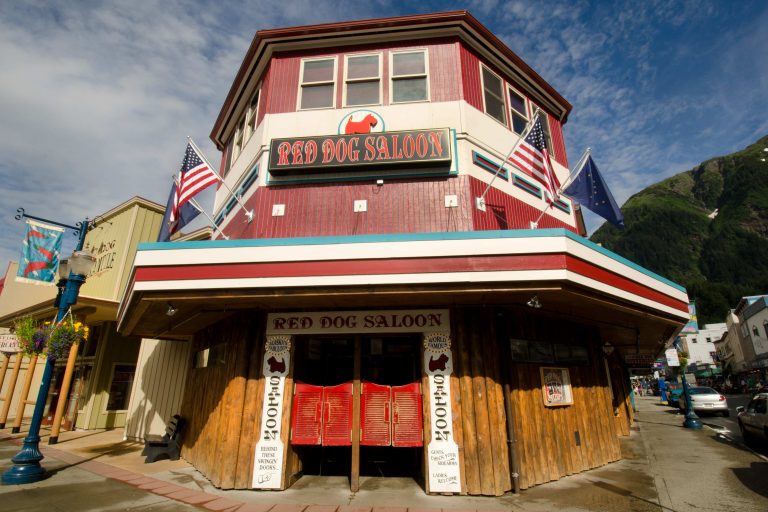
Founded in 1880, Juneau started as a gold-mining camp. By 1914, to meet demand from those miners, Juneau had built 30 saloons. Although many now are just ghosts of the past, some still operate downtown.
The Red Dog Saloon, its bright red swinging doors make the building easy to spot, recognized by the Alaska Legislature as Juneau’s oldest man-made tourist attraction. Some old timers say the saloon started as a tent on the beach. The owners eventually constructed a building that relocated a few times before the saloon moved to its current location in 1988.
Now open for lunch and dinner, the saloon is the self-proclaimed home of “Juneau’s best wings.” The Red Dog still has its sawdust floor. That makes it easy to imagine the saloon once featured performances by “Ragtime Hattie,” who played the piano while wearing white gloves and a halter top made of silver dollars.
Treasures on display include paper currency signed by miners from around the world and a gun that Wyatt Earp checked but failed to reclaim while on a trip to Nome.
A group of Juneau residents purchased the saloon in 2008. They expanded the building in 2012 to connect the saloon to the Red Dog Mercantile, which sells souvenirs and apparel.

This late Victorian wood-frame building marks Juneau’s transition from a mining camp to the state capital.
The laundry was built in 1901 to serve single miners. It operated on the ground floor with office space and residences overhead. After the laundry relocated in 1929, the building, with its distinctive turret, was remodeled.
Now known as the Emporium Mall, the building was placed on the National Register of Historic Places in 1978.
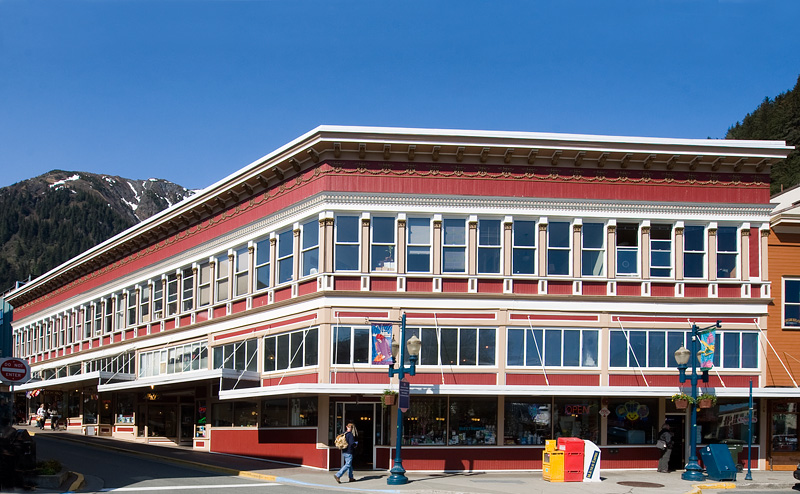
This two-story wooden building occupies an entire five-sided city block. It was built in two phases by longtime Juneau Mayor Emery Valentine in 1904 and 1912.
The building, which also is known as Valentine’s Place or the Valentine Business Block, was designed by Valentine, who was an architect, miner, goldsmith, firefighter, and businessman.
The Valentine Building is considered a premier example of Alaskan frontier architecture. It’s now the home of the Juneau Drug Co.
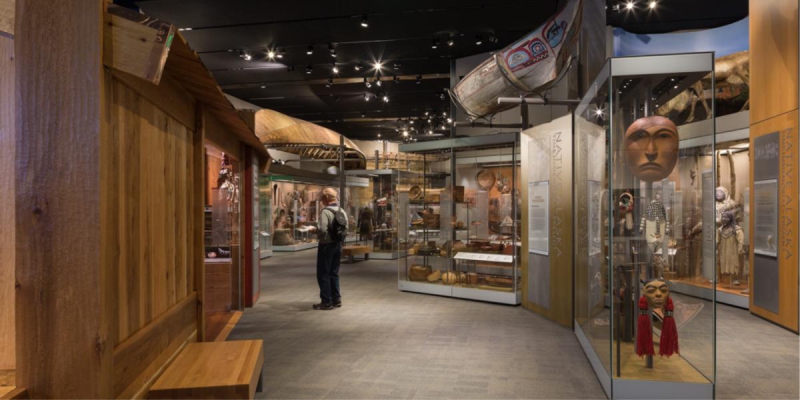
The Alaska State Museum is best known for its full-size eagle’s nest in a two-story tree.
The museum, which has more than 27,000 artifacts, also provides information about the state’s gold-mining history and the period when Alaska was Russian territory.
In addition, the museum showcases that state’s native heritage including ancient artifacts and an Eskimo-carved ivory collection.
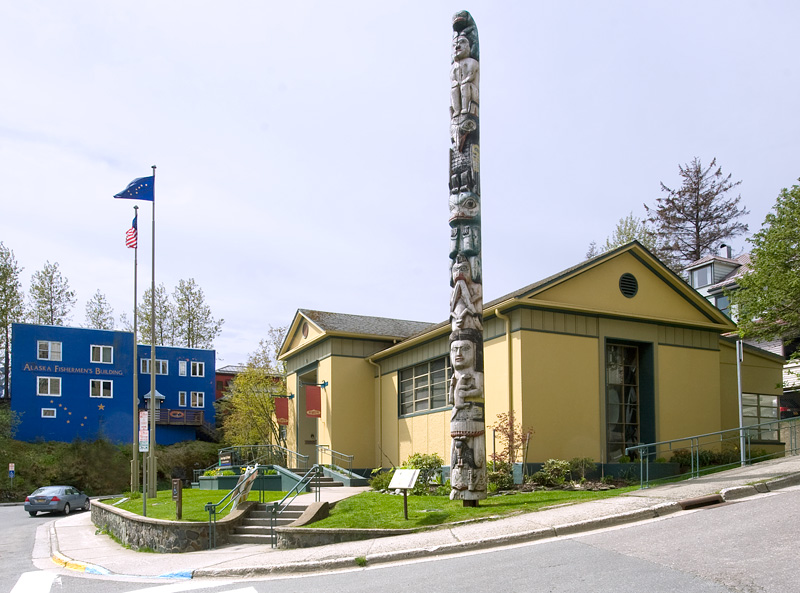
The Juneau-Douglas City Museum focuses on Juneau’s history and cultural heritage.
The museum is located in the Veterans Memorial Building, which was the site of Alaska’s 1959 statehood ceremony. The 49-star flag, which was first flown there, remains on display.
Located near the State Capitol, the building first served as the Juneau Memorial Library.
The museum includes exhibits that show Juneau’s changing shoreline, the backgrounds of its homesteaders, and artifacts that illustrate the rich history of the Tlingit, Juneau’s first residents.
If you want to experience Alaska’s mining history, visit the interactive exhibits in the hands-on mining gallery. The displays feature a cross-section of the 1917 Treadwell Mine cave-in. Children can try on hard hats and miners’ clothing.
Watch a 26-minute documentary in the video room that introduces Tlingit life and explores how Juneau developed from its gold rush days through the fight for statehood.
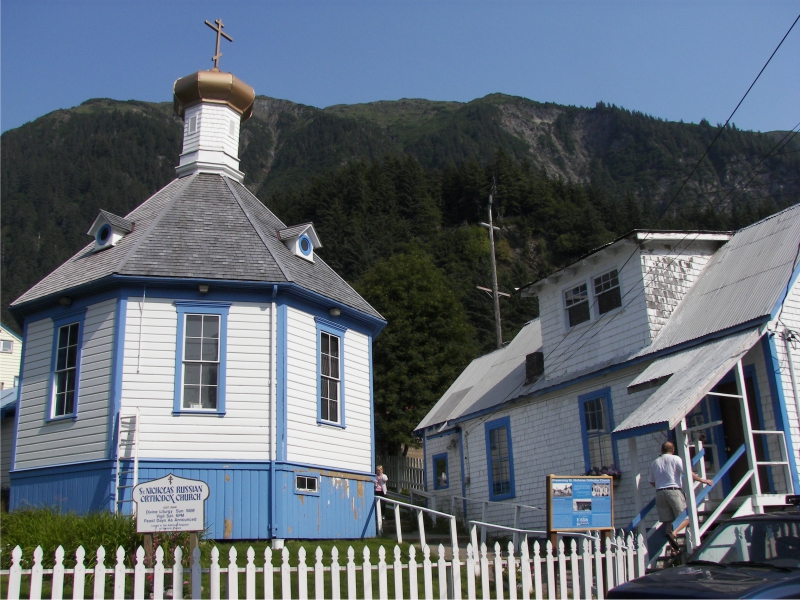
The native Tlingit served as the catalyst to establish the St. Nicholas Russian Orthodox Church in 1894.
Curiously, a majority of the Tlingit began observing Eastern Orthodox Christianity during Russian control from 1741 to 1867. The Tlingit established an Orthodox chapel in Sitka where they worshipped in their own language.
In contrast, many English-speaking missionaries forbade using native languages or customs.
The Tlingits in Juneau had been worshipping in the Orthodox faith using their own language since the early 1800s.
St. Nicholas Russian Orthodox Church features a traditional Russian gold onion dome. The octagon-shaped building is the oldest continuously used church in the Inside Passage.
The church’s small gift shop sells Russian nesting dolls and other handcrafted items.
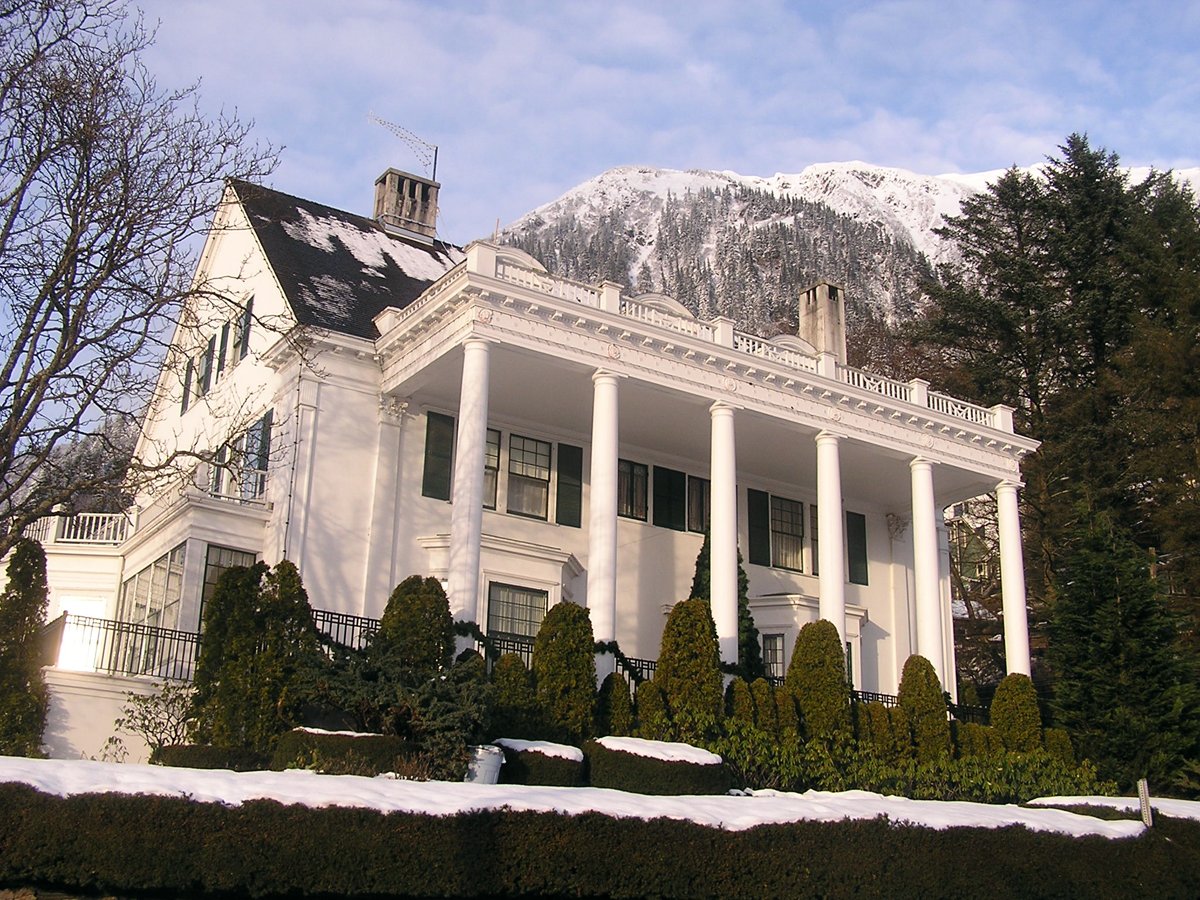
Although the home of Alaska’s governor isn’t open for tours, the mansion remains a popular stop for photos.
The mansion, built in 1912 for about $44,000, has 35 rooms and eight fireplaces.
A totem pole outside the mansion illustrates the origin of the mosquito. It was commissioned by the Civilian Conservation Corps in 1939.
Take a tour through Juneau’s history by visiting seven must-see sites near Juneau Hotel.
Worried a downtown tour will be too much walking? Alaska Pedicab also offers downtown tours.
Further reading:

Thinking about tackling Juneau’s rugged alpine terrain? Learn how long it takes to climb Juneau’s highest peaks, what to expect on each trail, and how to plan the perfect adventure during your stay.
Experience the rich heritage of Alaska through authentic Native tours in Juneau. Learn about local traditions, art, and storytelling that bring Alaska’s culture to life.
Looking for the best hotels in Juneau for business travelers? Explore top picks offering quiet rooms, reliable Wi-Fi, and in-room desks designed to help you stay productive while traveling.